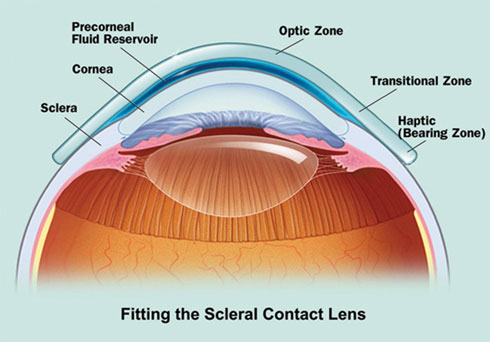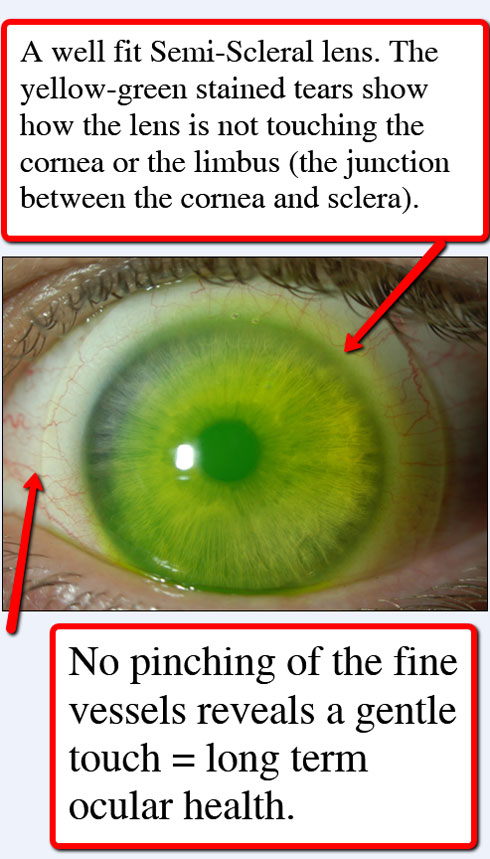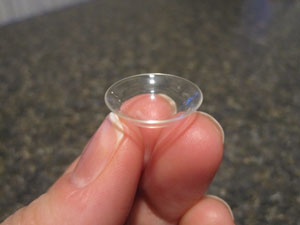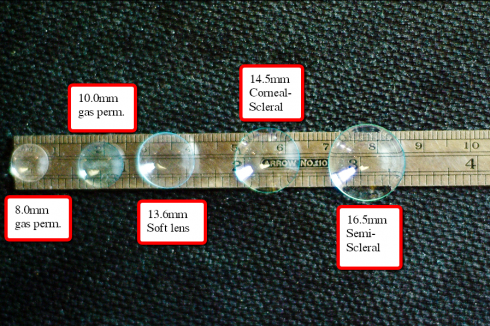Among contact lens practitioners, there is no hotter topic than scleral contact lenses.
 Although the concept for scleral lenses dates back to the 1500s and Leonardo da Vinci, the last few years have seen an explosion in interest in the modality. This interest has driven new product innovations and applications.
Although the concept for scleral lenses dates back to the 1500s and Leonardo da Vinci, the last few years have seen an explosion in interest in the modality. This interest has driven new product innovations and applications.
The excitement in the modality comes from the ability to provide patients with improved visual clarity due to the vastly superior optics of RGP (rigid gas permeable) lenses while providing comfort that meets and sometimes exceeds soft contact lenses. Although it seems counter-intuitive, because scleral lenses are larger than traditional RGP lenses, they are more comfortable. Due to their size, contour, and limited movement, there is actually very little sensation at all. This is because they rest and are supported by the sclera (the white part of the eye) and vault the cornea (the clear structure in the front of the eye). The cornea is extremely sensitive while the sclera is not. By utilizing a lens to vault the entire cornea, excellent comfort and vision can be achieved.
 The size of scleral lenses introduces additional concerns regarding the normal physiology of the cornea and the eye. Only extremely oxygen permeable materials are used to ensure an adequate supply of oxygen for the cornea. Also, because of poor tear exchange under the lenses, preservative free solutions must be utilized and specific care systems are prescribed for cleaning. Insertion and removal of the lenses can be a bit trickier than conventional contact lens designs, although with proper training most patients are successful.
The size of scleral lenses introduces additional concerns regarding the normal physiology of the cornea and the eye. Only extremely oxygen permeable materials are used to ensure an adequate supply of oxygen for the cornea. Also, because of poor tear exchange under the lenses, preservative free solutions must be utilized and specific care systems are prescribed for cleaning. Insertion and removal of the lenses can be a bit trickier than conventional contact lens designs, although with proper training most patients are successful.
The costs of scleral lenses can be significantly higher than other types of lenses. The fitting process is more challenging than other modalities and requires more time and expertise from the doctor. Each lens is custom made and the manufacturing process for the laboratory is more time consuming with this class of lenses.
 Although scleral lenses will clearly not become the lens that dominates the contact lens market, when the need is there, this lens can often solve problems that are unsolvable through any other means. For corneas that have become irregular in shape, scleral lenses can sometimes outperform other types of contact lenses. An irregular cornea can be the result of a disease such as Keratoconus, trauma, corneal transplant, or secondary to refractive surgery. In many cases, the irregular cornea prevents proper centration of a corneal lens but a scleral lens allows proper centration by aligning on the sclera and vaulting the irregular cornea. Visual clarity with a scleral lens, as well as RGP corneal lenses, can be vastly superior to glasses or soft contact lenses especially for patients with irregular corneas. These lenses provide the optical system a new regular spherical surface that provides great vision while neutralizing all of the irregular optics of the underlying cornea. For many people with irregularly shaped corneas, these types of lenses provide the only form of usable vision correction!
Although scleral lenses will clearly not become the lens that dominates the contact lens market, when the need is there, this lens can often solve problems that are unsolvable through any other means. For corneas that have become irregular in shape, scleral lenses can sometimes outperform other types of contact lenses. An irregular cornea can be the result of a disease such as Keratoconus, trauma, corneal transplant, or secondary to refractive surgery. In many cases, the irregular cornea prevents proper centration of a corneal lens but a scleral lens allows proper centration by aligning on the sclera and vaulting the irregular cornea. Visual clarity with a scleral lens, as well as RGP corneal lenses, can be vastly superior to glasses or soft contact lenses especially for patients with irregular corneas. These lenses provide the optical system a new regular spherical surface that provides great vision while neutralizing all of the irregular optics of the underlying cornea. For many people with irregularly shaped corneas, these types of lenses provide the only form of usable vision correction!
 Scleral lenses can also be superior to other modalities when it comes to contact lens related dryness. Because the lenses are filled with sterile saline prior to insertion, the cornea remains bathed in fluid eliminating contact lens dryness issues. In fact, scleral contact lenses are the treatment of choice for patients with severe ocular surface disease and dry eye syndrome.
Scleral lenses can also be superior to other modalities when it comes to contact lens related dryness. Because the lenses are filled with sterile saline prior to insertion, the cornea remains bathed in fluid eliminating contact lens dryness issues. In fact, scleral contact lenses are the treatment of choice for patients with severe ocular surface disease and dry eye syndrome.
For patients suffering from severe ocular surface disease, dry eye, or poor optics from an irregular cornea, a properly fit scleral contact lens can be life changing.

